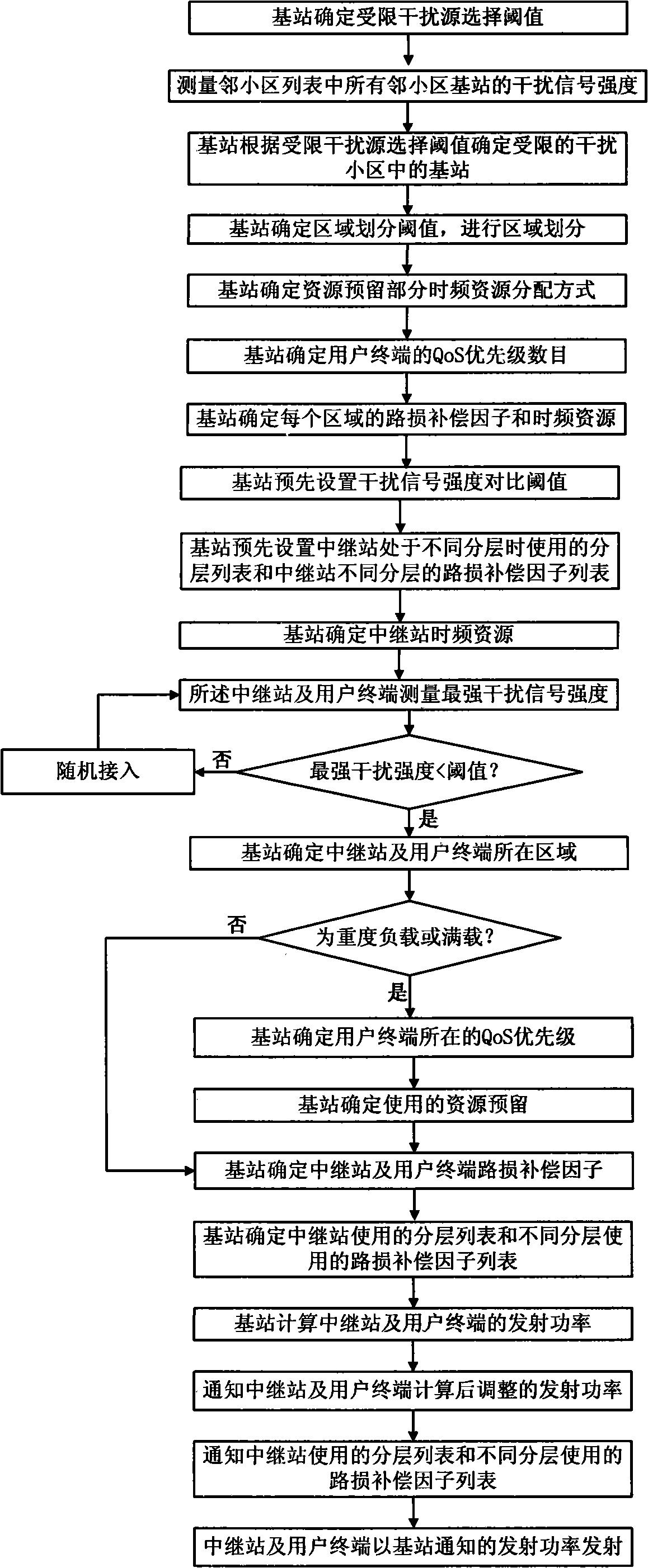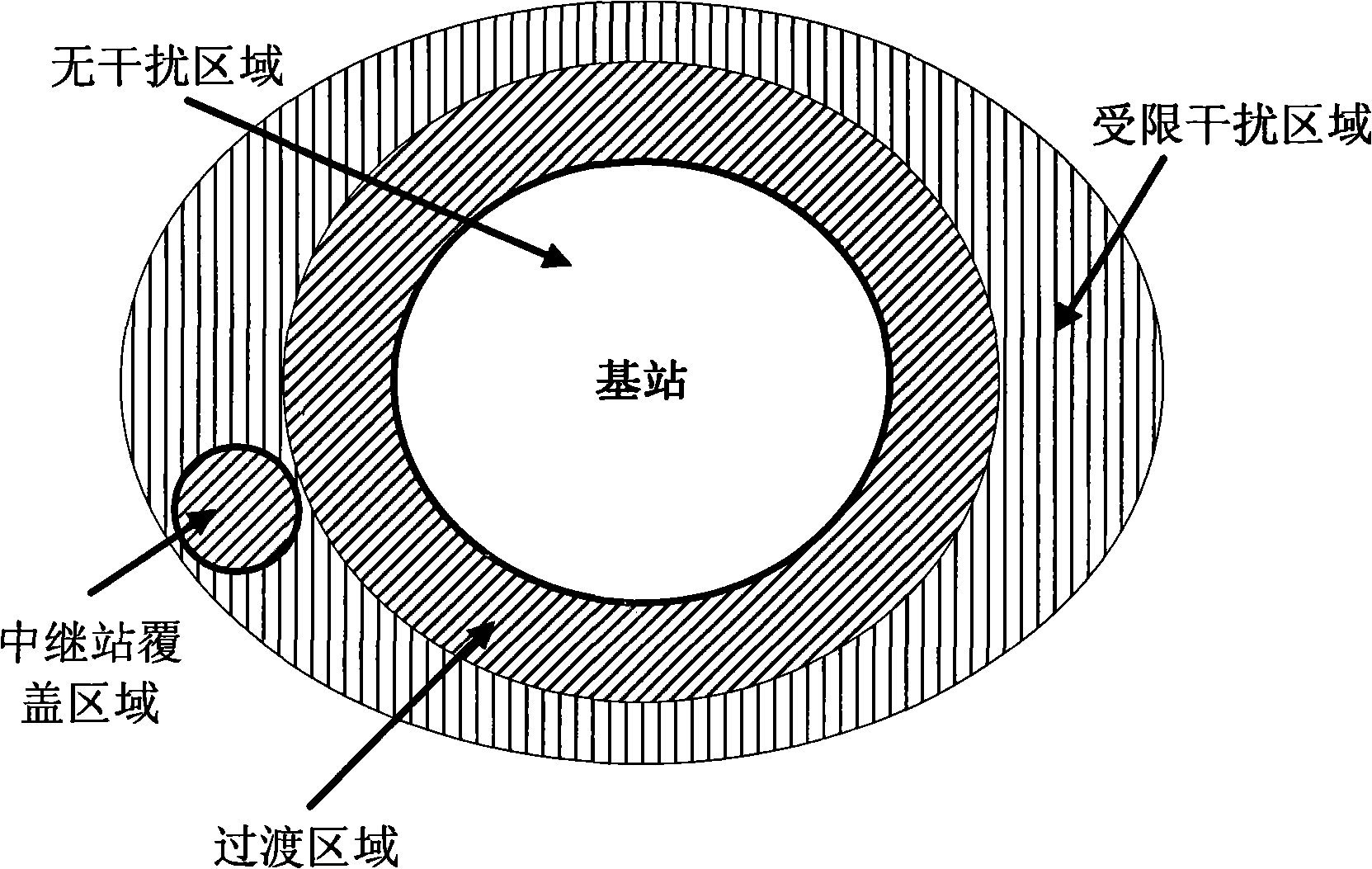Method for coordinating interference between districts of relay wireless communication network
An inter-cell interference and coordination method technology, applied in wireless communication, transmission control/equalization, power management, etc., can solve the problem of decreased spectrum utilization, decreased throughput of user terminals at the edge of cells, decreased average throughput of user terminals, and reduced scheduling flexibility to improve user terminal throughput, improve flexibility, and ensure service quality
- Summary
- Abstract
- Description
- Claims
- Application Information
AI Technical Summary
Problems solved by technology
Method used
Image
Examples
Embodiment Construction
[0068] The present invention will be described in further detail below in conjunction with the accompanying drawings and embodiments.
[0069] As shown in FIG. 1 , it is a flowchart for realizing the inter-cell interference coordination method of the present invention. Among them, FIG. 1(a) is a flow chart of base station interference coordination, and the steps are as follows:
[0070] Step 101a: the base station determines a threshold for selecting a restricted interference source;
[0071] Step 102a: the base station measures the interference signal strength of all neighboring cell base stations in the neighboring cell list;
[0072] Step 103a: the base station determines the base station in the restricted interfering cell according to the restricted interference source selection threshold;
[0073] Step 104a: the base station determines an area division threshold and performs area division;
[0074] Step 105a: the base station determines the time-frequency resource allo...
PUM
 Login to View More
Login to View More Abstract
Description
Claims
Application Information
 Login to View More
Login to View More - R&D
- Intellectual Property
- Life Sciences
- Materials
- Tech Scout
- Unparalleled Data Quality
- Higher Quality Content
- 60% Fewer Hallucinations
Browse by: Latest US Patents, China's latest patents, Technical Efficacy Thesaurus, Application Domain, Technology Topic, Popular Technical Reports.
© 2025 PatSnap. All rights reserved.Legal|Privacy policy|Modern Slavery Act Transparency Statement|Sitemap|About US| Contact US: help@patsnap.com



